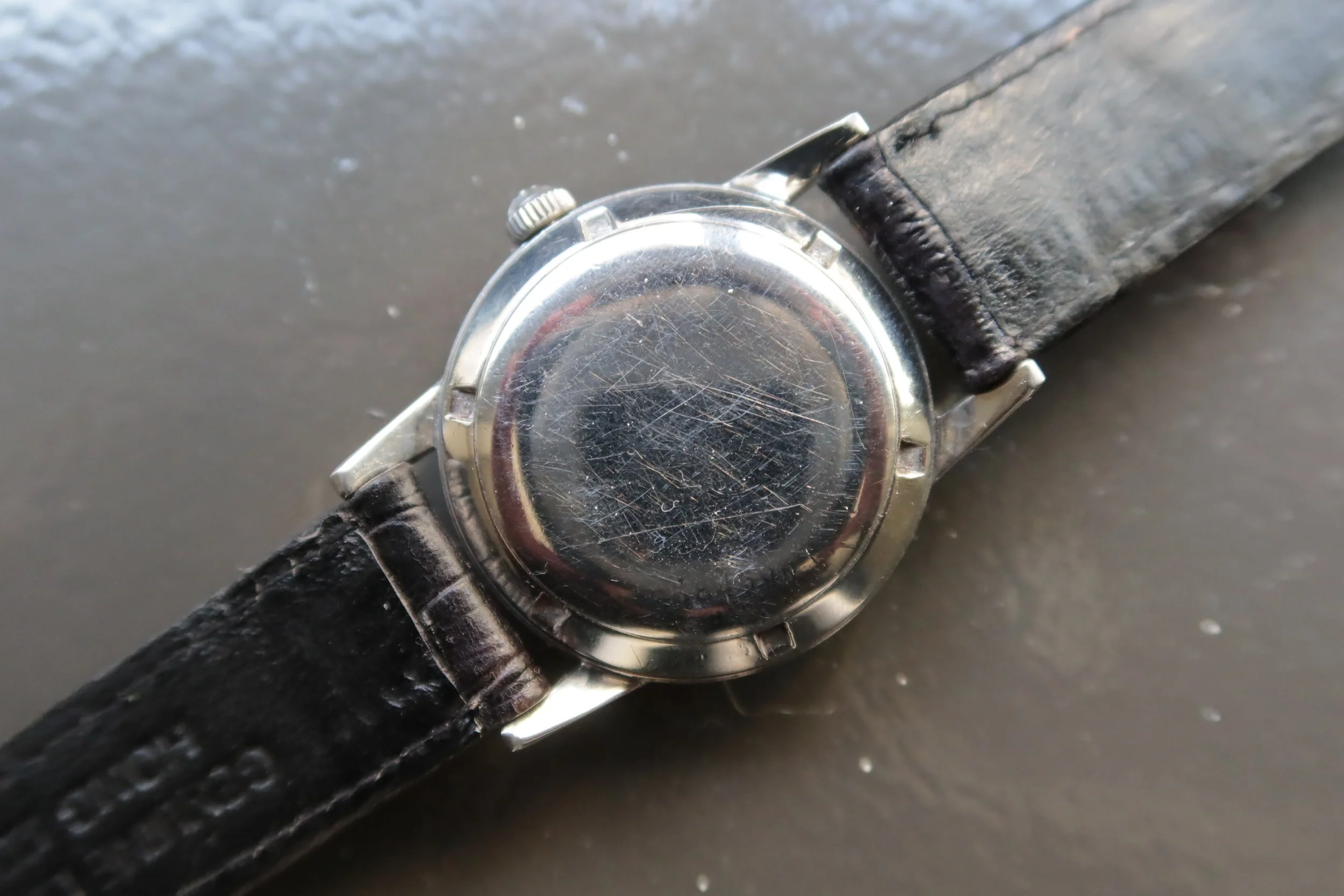A Focus on Innovation, The 1952 Eterna Eterna-Matic with Black Dial
Learning about new innovations in the watch industry can be an exciting part of collecting watches. Brands always looks to push the envelop of design, material sciences, and engineering in watchmaking. Many times, the brands making the largest strides in this department are independent, or smaller brands that are not owned by large public companies. Mainly because they have more freedom to experiment with things they can improve. Although, we should never discount the ability of large brands to innovate in the same way. Eterna, which began its emergence in the watch industry in 1956, was a big player in watchmaking innovation.
Eterna started its journey as a brand in 1856. Dr. Joseph Girard and Urs Schild took an entrepreneurial step with the growing Swiss watch industry and began producing movements. Their company was called “Dr Girard & Schild” and was located in Grenchen, located in the Canton in Solothurn. They produced semi-finished and fully finished movements. In 1866, Dr. Girard left the company and Schild decided to move into other areas of innovation. He diversified the company into automatic manufacturing machines and steam engines.
As time went on, producing ebauches movements became less profitable for Schild, so Schild decided to continue their watchmaking journey, but instead produced fully assembled watches; the first pocket watch being presented in 1876. During this time, Urs’ brother Adolph had joined the company so they went through a rebrand - the company was from that point forward their factory was known as "Präzisionsuhren-Fabrik Gebrüder Schild" (Precision Watches Factory Brothers Schild) and the company was known as "Schild Fréres & Co.". I suppose the question is, when did “Eterna” show up on the dial of their watches?
In 1890, “Eterna” was first printed on the dials of some of the watches the company produced. Most of the time it was written below the name of the company. It was only in 1906 when the company was re-named once again to Eterna-Werke, Gebrüder Schild & Co. when the name was fully adopted. The company has an immense history engrained in the history of watchmaking. But, we’ll need to skip to the importance of the Eterna-Matic.
By 1948, the automatic movement had been introduced and was in full production by many brands, Rolex being the pioneer in 1931. Most brands were focused on improving this movement, as general wear and tear of these watches would lead to movements become less accurate and less reliable. This stemmed from friction between components in the watch. Eterna took a different path - they introduced the ball-bearing mounted rotor.
The idea with the movement is it used five miniature ball bearing that supported the automatic rotor. It reduces the bearing friction and helps the watch operate more smoothly and increases its reliability. You also may have noticed that the Eterna logo is a cluster of five dots - you guessed it! Eterna adopted the logo resembling the ball bearings as their official brand logo. This technology really lead to huge success of the brand and became an extremely important part of watchmaking going forward.
The watch we are looking at today is an Eterna-Matic manufactured in 1952. The reference number is unknown, although using this extremely helpful resource, the reference likely starts with a “1” (stainless steel), and is either B/ (metal bracelet), and a “T(DT)” or “TT” (waterproof case). The watches stainless steel case measures 33.5mm in diameter, and is in strong condition. The case has likely been polished as the case serial number is faint, but visible with a loupe.
The lugs are long and straight, and curve towards the wrist. This sits the watch nicely on the wrist, but make it wear smaller than if the watch was more flat. The lugs have holes, which make it easy to swap straps. Looking at the crown, the crown is signed with the five-dot logo discussed previously.
Moving to the dial, the watch features a black dial with applied hour markers, logo, and Eterna-Matic name which is printed. It has sword hands which look nice with the applied hour markers. The black dial has aged since its manufacturing in the 50’s, showing what enthusiasts call “spiderweb” patina. As discussed at length on Life on the Wrist, patina is subjective so spiderweb dial’s are not for everyone. Although, it is a unique look that many collectors enjoy.
The watch is running on the caliber 1247UC movement. This was the second variant of the famous Eterna-Matic movement, the original being the caliber 1248 which was introduced in 1949. That same year the caliber 1247 was introduced and produced until 1954. The caliber has two numbers after it which indicate different things about the movement. All movements using suffix “U” signify the Eterna-U shock protection or “T” that signifies “Eterna-T”. Movements with the suffix “C” indicate a modification to the design. So, the caliber 1247 in this watch had shock protection and had some modifications to the design. This watch was manufactured right in the middle of when the movement was produced.
The watch is an excellent example of how a company innovated during this time period. The design of the watch is contemporary with a lovely spiderweb patina that of course will be attractive to a specific type of collector. Nevertheless, wearing a watch that truly stood for innovation is always an enjoyable experience, and a great story to share with those admiring the watch on one’s wrist.
Enjoy!








